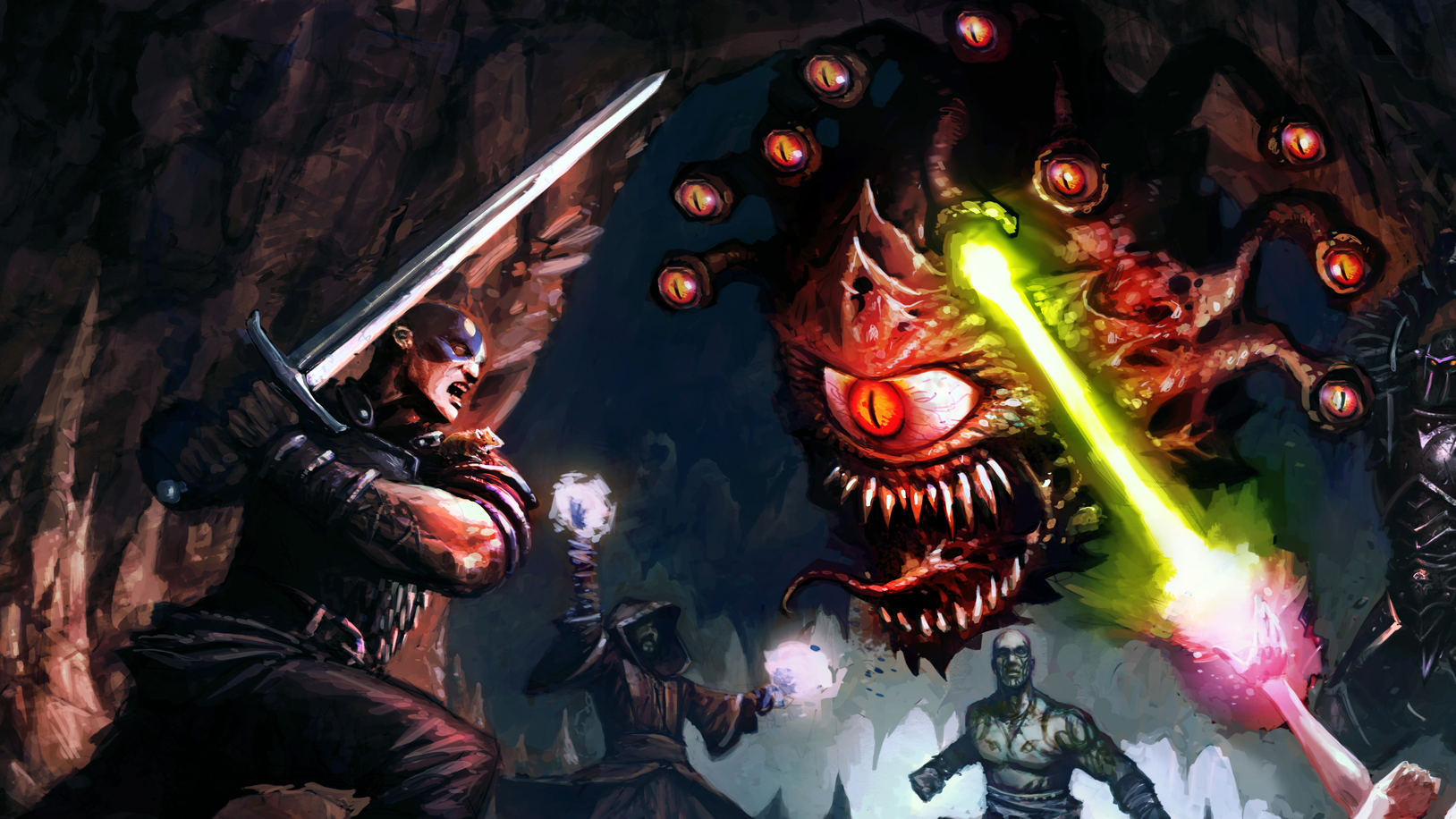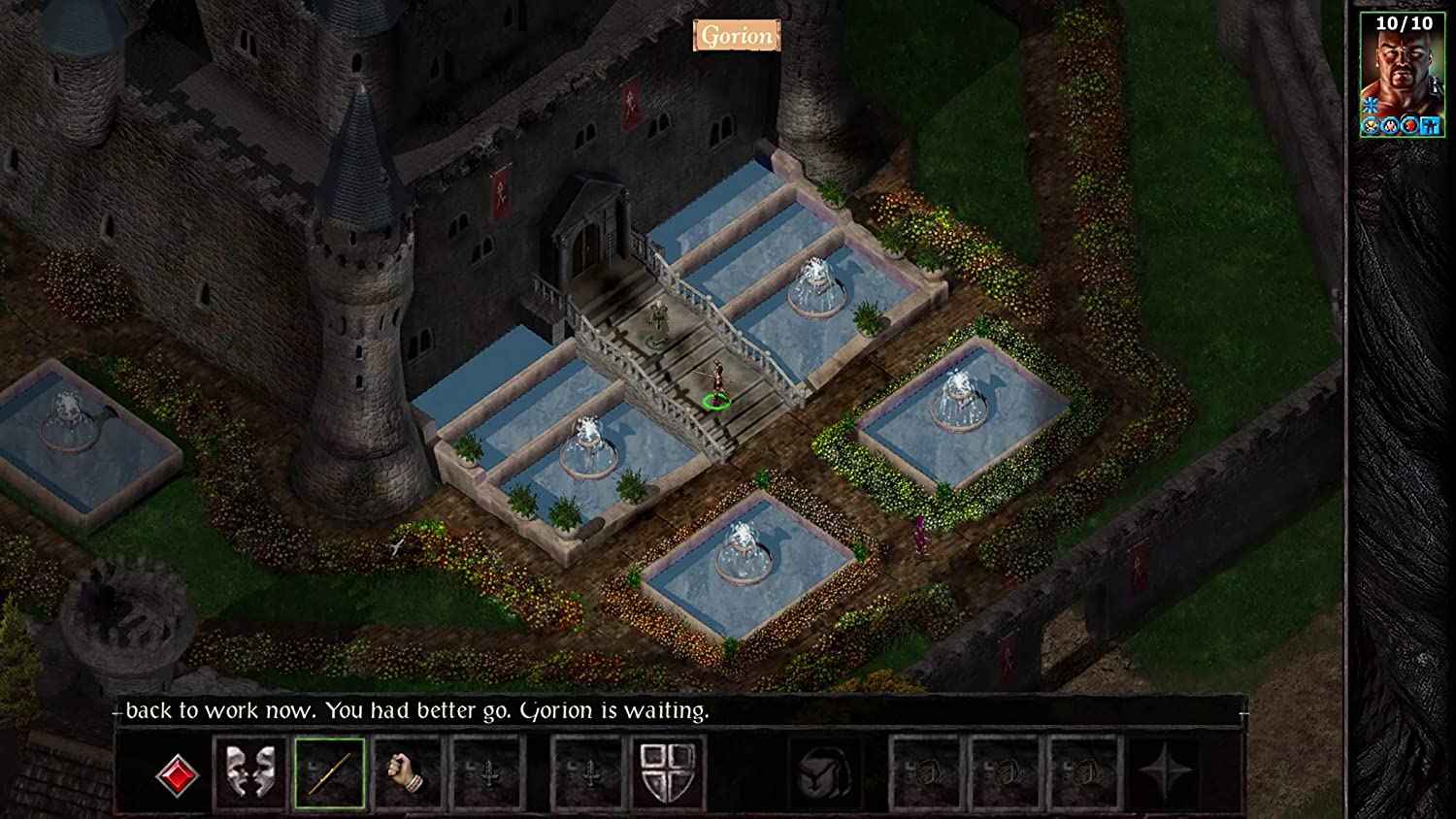Playing Baldur’s Gate on Nintendo Switch has revolutionized the game
Analog sticks are the best thing to happen to the classic RPG

To say I was skeptical of the Baldur’s Gate Nintendo Switch port would be to sell my cynicism short. The idea of using an analog stick to play a crunchy, isometric RPG didn’t sit right with me. With so many objects to interact with, enemies to bash, spells to select, and party members to manage, how could a single analog stick match the deft multi-dimensional movement of a good old-fashioned mouse and keyboard?
Developer Beamdog has changed all that. Its 2019 Nintendo Switch port of Baldur’s Gate: Enhanced Edition has shown me the error of my ways. Analog sticks and D-pads might not be the best way to play BioWare’s classic RPG, but they're probably optimal for a contemporary RPG audience. Take away the mouse and keyboard and you’ve not only changed the game, but revolutionized it - probably for the better
A perfect pair

Baldur’s Gate and analog sticks aren’t natural companions. The game belongs to an era of PC gaming during which isometric dungeon-crawlers hadn’t embraced the thumbsticks of controllers. For years, you could only play the game using mouse and keyboard - bar an Android port that’s best left forgotten - setting the standard of computer roleplaying games for years to come.
It’s easy to see why. Controlling a party of characters - each with specific abilities, actions and inventories - cycling through multiple menus and pop-ups across the screen, and navigating dense dialogue trees all lend themselves to a mouse setup. Traditionally, you’d move your party of adventurers around by clicking on the map, much as you would control units in an RTS.
Beamdog’s stroke of genius was to ditch the cursor
That’s still possible in the Switch port. You can opt to use a fixed cursor, moving the map around a central reticle to select objects and places of interest. It works well enough, and is certainly a more elegant way of incorporating a cursor into the handheld console than tying it directly to an analog stick.
But Beamdog’s stroke of genius was to ditch the cursor altogether. You don’t need to control your character vicariously by clicking about the map. Instead, you’re able to directly control their movements with the left analog stick, much like you would move your character in the console versions of Diablo 3 or Dragon Age.

Rather than clicking on interactable objects and waiting for your character to walk over, you can take them there directly. Rather than selecting an NPC and watching as your adventurer sidles up to them, you can walk over yourself. Combat is no longer a flurry of furious mouse-clicking as you rush to position your party. Instead, you’re able to take control of each character directly and arrange them in the optimal position.
Sign up for breaking news, reviews, opinion, top tech deals, and more.
It all works deftly and is integrated so smoothly that I rarely, if ever, feel the need to switch to the alternative cursor-based control scheme. As for everything outside of movement, the port handles that through full use of the Switch’s many buttons and shoulder pads. You might not be able to navigate its menus as fast as you would with a mouse, but that was never on the table.
The game plays and looks more like a contemporary action RPG than a crunchy isometric dungeon-crawler of days gone by
And that’s the crux of it. This analog stick control scheme doesn’t just make Baldur’s Gate manageable for a compact handheld console like the Nintendo Switch, it makes it eminently playable by shifting its feel. The game plays and looks more like a contemporary action RPG than a crunchy isometric dungeon-crawler of days gone by. That’s surely more appealing to modern audiences that grew up on Diablo and Dark Souls instead of the Dungeons & Dragons sessions that the original Baldur’s Gate playerbase was bred on.
Pillars of Eternity and Divinity: Original Sin have kept the old-school isometric flame well and truly burning for players ready to lap up that style of game. But adapting classic titles like Baldur’s Gate, to which many modern releases owe their inspiration, so that they’re more accessible to broader audiences can only be a good thing. If ports are supposed to extend a game’s reach to new players, then Beamdog’s effort here has certainly gone down the right path.
An action RPG refresh

The analog stick control scheme isn’t only brilliant for new players, however. The change is also refreshing for a returning adventurer who, like me, has already played through the original game on PC. I was able to jump back into the familiar world of Faerûn and barrel through the game as I always had, but this time in a totally different atmosphere.
Its already vibrant world feels bolder when you’re able to walk through dank dungeon corridors and sprawling city streets directly, rather than clicking your way across the map. Beamdog hasn’t touched the core Advanced Dungeons & Dragons system that underlies the game, nor altered any plot points, characters, or anything else returning players will likely remember. It’s exactly the same game, only more engaging.
Aside from anything else, that gives me plenty more reason to dig in. I’ve experienced Baldur’s Gate and many other D&D RPGs like it. But I’ve never before played one feeling as if I’ve just stepped into the world of Diablo.
Lessons for Baldur’s Gate 3

Controller support has become far more prevalent across RPGs since Baldur’s Gate was originally released in 1998. Larian’s fantastic 2017 RPG Divinity: Original Sin 2 lets you play through its epic fantasy story with an analog stick - a feature that will hopefully be carried over to Baldur’s Gate 3. That game’s currently in early access and over a year from release. With several more classes, races, and quality-of-life improvements yet to be added, don’t be surprised if gamepad support makes its way to the game in the near future.
If it does, Baldur’s Gate 3 will be all the better for it. As Beamdog’s Switch port of the series’ first entry has shown me, throwing out the mouse and keyboard tradition that’s become so ingrained in computer RPGs can work wonders. Not only did it allow Beamdog to create a port that suited the controls of Nintendo’s handheld console, but it did so in a way that’s as appealing to new players as it is refreshing to old ones.
Let’s hope other RPG developers embrace the analog stick and aren’t as fearful of multi-directional thumbsticks as I once was.

Callum is TechRadar Gaming’s News Writer. You’ll find him whipping up stories about all the latest happenings in the gaming world, as well as penning the odd feature and review. Before coming to TechRadar, he wrote freelance for various sites, including Clash, The Telegraph, and Gamesindustry.biz, and worked as a Staff Writer at Wargamer. Strategy games and RPGs are his bread and butter, but he’ll eat anything that spins a captivating narrative. He also loves tabletop games, and will happily chew your ear off about TTRPGs and board games.